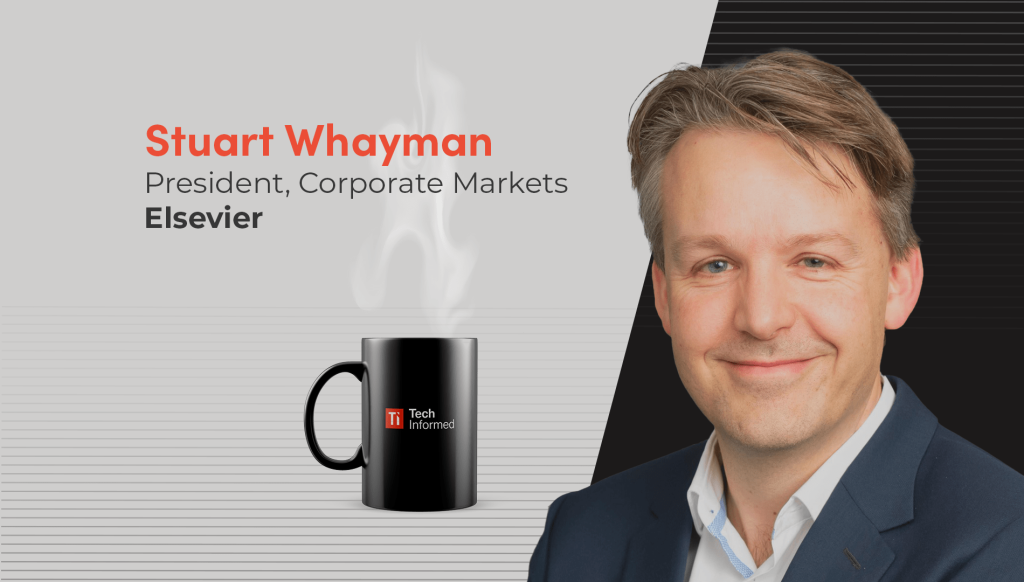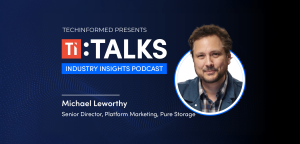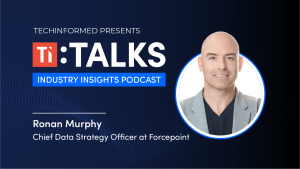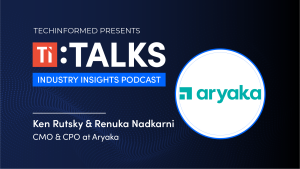

Stuart Whayman, president, corporate markets, Elsevier
Having joined information analytics group RELX nearly 30 years ago, Stuart Whayman has worked his way across a number of roles, from chief financial officer to senior business leadership, spending the past 11 years at…
Having joined information analytics group RELX nearly 30 years ago, Stuart Whayman has worked his way across a number of roles, from chief financial officer to senior business leadership, spending the past 11 years at Elsevier, its scientific information and analytics division.
Now president of corporate markets, he leads efforts to harness technology, data and AI to help researchers and businesses tackle some of the world’s most pressing challenges.
Over a cappuccino, he reflects on the role of AI in drug discovery and climate change, and on his career journey since completing a maths degree at the University of Oxford.
You’ve been with Elsevier for 11 years now. Could you tell me a bit about your journey and what kept you there so long?
My first 20 years were in finance, including 6 as global CFO at Elsevier and before that, 4 at a sister division. Over time, I realised my motivation wasn’t really about finance, it was about doing great things for customers. About six years ago I moved into general business leadership, which has been hugely rewarding, bringing together our technology, content, and teams to improve outcomes for customers.
And now is an exciting time for AI and data analytics. What’s it like working in that space at Elsevier?
It’s super exciting, but less because of the technology itself and more about what it enables. AI allows us to solve problems that were once too expensive or technically impossible. For researchers, one of the biggest challenges is literature discovery – sifting through vast amounts of content to identify new routes to discovery. AI helps unlock insights faster, saving time and accelerating innovation, while still relying on researchers’ expertise.
Elsevier has AI tools to help drug discovery, ScienceDirect AI and PharmaPendium AI. Could you tell me more?
ScienceDirect is the largest repository of trusted scientific content, so powering it with AI is really powerful for researchers. We launched ScienceDirect AI earlier this year and the feedback from researchers has been very positive. It helps speed up research discovery in areas like drug development or sustainable materials, where time really matters. PharmaPendium AI, which we just announced, is another step in that direction.
Looking back, what’s been a highlight of your time at Elsevier?
Leading teams to become more customer-focused has been a highlight. The outcome of that, I think, is the new innovations that are coming out that are more user-focused and much more transformative for individual users. So ScienceDirect is one. I’m proud not only because of what it means for Elsevier, but also because of the real-world impact – helping pharma companies with drug discovery or enabling chemical companies to find more sustainable materials. These advances are incredible important for the future of this planet and advancing humanity.
When you were studying maths, did you ever imagine this career path?
Honestly, no. I’ve always taken things step by step, focusing on interesting opportunities rather than long-term plans. If data science had been a defined profession 30 years ago, I might have taken a different path. But I’ve always been drawn to information and data, and technology has been the enabler along the way.
You’re also executive sponsor for climate action at Elsevier. How do AI and sustainability intersect for you?
We play a role in our own journey to net zero, but also through the scientific information we publish. AI can accelerate discovery in areas like clean energy, battery tech, and sustainable materials – critical to tackling climate change. At the same time, we’re mindful of AI’s energy use. That’s why we use retrieval-augmented generation (RAG) in our products. Instead of relying solely on large language models, it pulls from trusted content and summarises it, which uses much less energy than a full-scale LLM query.
Was it challenging to move from finance to business leadership?
Not as much change as you might think. As a CFO at a senior level, I was already involved in shaping and influencing the business to make great decisions for customers.
Finance leaders naturally get pulled into many different areas of the organisation. The real difference comes when you move into general business leadership: the buck stops with you. You’re no longer just an advisor, you’re responsible for the outcome.
As a CFO, you’re often a check or balance, especially around controls, whereas as a business leader, you need to be more visionary. So the persona is different, but from a technical or business understanding perspective, there are actually a lot of similarities.
Do you manage to switch off from work?
Definitely. I believe rest is essential, so I’m disciplined about sleep and turning off emails. I enjoy fresh air, walking the dog, reading, a bit of sport, and running.
And finally, how do you take your coffee?
I wasn’t a big coffee drinker until the pandemic, when my wife and I bought a machine. Now we have a daily mid-morning ritual – usually a cappuccino or flat white. The rest of the day, it’s black tea, with the occasional espresso after dinner.







